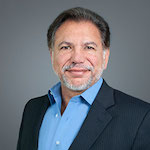Adult Stem Cell Therapy & Platelet Rich Plasma
Shoulder Labral Tear
Glenoid Labral Tear Treatment in Tampa and Sarasota
If you have general shoulder pain, loss of range of motion, pain while making overhead motions, a “catching” feeling in your shoulder, or weakness, you could have a glenoid labral tear.
About the joint’s structure
The humerus (upper arm bone), clavicle (“collar bone”), and scapula (“shoulder blade”) come together as the three parts of your shoulder. The top of your humerus sits in a shallow socket, called the glenoid. The joint is stabilized by a fibrocartilaginous, or “soft tissue” structure, known as the labrum. The “rim” formed by the labrum essentially makes the joint deeper to hold the arm bone. Ligaments attach at this site as well. Glenoid labral tears can be superior or inferior (above or below the glenoid socket, respectively).
How bicep labral injuries occur
Injuries may occur as the result of sudden trauma, or just from repetitive motion in daily activities. It’s possible to hurt this area trying to catch yourself falling, falling onto an outstretched arm, or while lifting a heavy object. Throwing athletes and weight lifters are particularly susceptible. Pitchers often experience labral tears as there is more force on the biceps attachment while throwing the ball at great speeds and when throwing curve balls and sliders.
Types of injuries
“SLAP” is an acronym that means “superior labrum, anterior to posterior”. This refers to a front to back tear in the rim above the middle of your glenoid socket. The biceps tendon could also be involved. Another type of injury occurs where there is a tear in the rim below the glenoid socket: A “Bankart lesion” occurs when the inferior glenohumeral ligament is involved.
What Dr. Bennett will do to get you back in the game:
Most labral tears need to be repaired. The biceps muscle which turns into a tendon and attaches to the socket of your shoulder can be damaged as described above. In order to get into the shoulder, the biceps tendon runs through a groove in the humeral head and the pulley is tissue which holds the biceps tendon in place.
In addition to being an expert shoulder surgeon, Dr. Bennett is also a globally-recognized contributor to the understanding of the anatomy of this area and has identified new injuries, previously unreported in the area of the biceps groove. He has classified these injures, developing surgical techniques for the repair of the biceps pulley. It is Dr. Bennett’s expert opinion that the low return to professional pitching is related to the fact that many surgeons treat the biceps tendon labral insertion while neglecting the pulley. If you are a professional athlete, ask Dr. Bennett about his “no return to play, no pay” guarantee following treatment of your shoulder injury for these lesions.
Call us at (941) 953-5509
Copyright 2013 Bennett Orthopedics and Sportsmedicine






